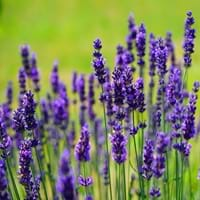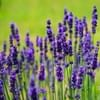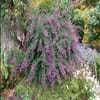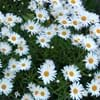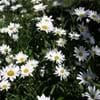Life Span
Perennial
Perennial
Origin
Mediterranean
California
Types
Lodden Blue, Royal Velve, Melissa, Sachet, Sharon Roberts etc
Not Available
Number of Varieties
Not Available
Habitat
Grassland, Hillside, Rocky areas
Chaparral, River side
USDA Hardiness Zone
8-9
7-10
Sunset Zone
4, 5, 6, 7, 8, 9, 10, 11, 12, 13, 14, 15, 16, 17, 18, 19, 20, 21, 22, 23, 24
H1, 4, 5, 6, 7, 8, 9, 10, 11, 12, 14, 15, 16, 17, 18, 19, 20, 21, 22, 23, 24
Habit
Cushion/Mound-forming
Upright/Erect
Minimum Width
Not Available
Flower Color
Purple, Blue Violet, Plum
White, Yellow
Flower Color Modifier
Bicolor
Bicolor
Fruit Color
Not Available
Green, Tan
Leaf Color in Spring
Sea Green, Gray Green
Gray Green
Leaf Color in Summer
Sea Green, Gray Green
Gray Green
Leaf Color in Fall
Sea Green, Gray Green
Gray Green
Leaf Color in Winter
Light Green
Light Green
Leaf Shape
Oblong
Lance shaped
Plant Season
Spring, Summer, Fall, Winter
Spring, Summer
Sunlight
Full Sun
Full Sun
Type of Soil
Loam, Sand
Loam, Sand
The pH of Soil
Acidic, Neutral
Neutral, Alkaline
Soil Drainage
Well drained
Well drained
Bloom Time
Late Spring, Early Summer, Summer
Early Spring, Spring, Late Spring, Early Summer, Summer
Tolerances
Drought
Drought
Where to Plant?
Ground
Ground
How to Plant?
Seedlings, Stem Planting, Transplanting
Cuttings, Seedlings
Plant Maintenance
Medium
Medium
Watering Requirements
Does not require lot of watering, Over-watering can cause leaf problems or root diseases, Water when soil is dry
Needs watering once a week, Water well when planted
In Summer
Lots of watering
Lots of watering
In Spring
Moderate
Moderate
In Winter
Average Water
Average Water
Soil pH
Acidic, Neutral
Neutral, Alkaline
Soil Type
Loam, Sand
Loam, Sand
Soil Drainage Capacity
Well drained
Well drained
Sun Exposure
Full Sun
Full Sun
Pruning
Do not prune during shooting season, Prune after flowering, Prune if you want to improve plant shape, Prune in late summer or fall, Prune in spring, Prune to control growth
prune nearly to the ground in late fall
Fertilizers
All-Purpose Liquid Fertilizer
organic fertlizers
Pests and Diseases
Armillaria mellea, Cecidomia, Cuscuta, Gray mold, Meligetes, Phoma, Rhizoctonia Root Rot, Sophronia Humerella
Verticillium Wilt
Plant Tolerance
Drought
Drought
Flower Petal Number
Single
Single
Fragrant Bark/Stem
Yes
No
Showy Foliage
Yes
Not Available
Foliage Texture
Fine
Not Available
Foliage Sheen
Matte
Not Available
Attracts
Butterflies
Bees, Birds, Butterflies
Allergy
Diarrhea, Headache, Itchy eyes, Nausea, Vomiting
no allergic reactions
Aesthetic Uses
Beautification, Bouquets, Showy Purposes, Used for decorating walls, fences, gates, hedges, etc.
Showy Purposes
Beauty Benefits
Not Available
Not Available
Environmental Uses
Air purification
Air purification
Medicinal Uses
Acne, Skin irritation
antimicrobial, Astringent, Gum Problems, Stomach pain
Part of Plant Used
Flowers
Flower Stalk
Other Uses
Oil is used for aromatherapy, Oil is used in perfume, soaps, creams, etc., Showy Purposes, Used As Food, Used as Ornamental plant, Used for fragrance
Used as Ornamental plant
Used As Indoor Plant
No
No
Used As Outdoor Plant
Yes
Yes
Garden Design
Bedding Plant, Container, Cutflower, Feature Plant, Herb, Vegetable, Mixed Border, Rock Garden, Wall
Feature Plant, Groundcover, Mixed Border, Wildflower
Botanical Name
LAVANDULA stoechas 'Bee Brilliant'
ROMNEYA coulteri
Common Name
Spanish Lavender
Matilija Poppy
In Hindi
फ्रेंच लैवेंडर
Matilija Poppy
In German
Französisch Lavendel
Matilija Poppy
In French
lavande française
Matilija Poppy
In Spanish
lavanda francés
Matilija amapola
In Greek
γαλλική λεβάντα
Matilija παπαρούνας
In Portuguese
lavanda francesa
Matilija Poppy
In Polish
francuski lawendy
Matilija Poppy
In Latin
stoechade
Matilija Poppy
Phylum
Magnoliophyta
Magnoliophyta
Class
Magnoliopsida
Magnoliopsida
Order
Lamiales
Papaverales
Family
Lamiaceae
Papaveraceae
Clade
Angiosperms, Asterids, Eudicots
Angiosperms, Eudicots
Tribe
Not Available
Not Available
Subfamily
Not Available
Papaveroideae
Number of Species
Not Available
Properties of French Lavender and Matilija Poppy
Wondering what are the properties of French Lavender and Matilija Poppy? We provide you with everything About French Lavender and Matilija Poppy. French Lavender doesn't have thorns and Matilija Poppy doesn't have thorns. Also French Lavender does not have fragrant flowers. French Lavender has allergic reactions like Diarrhea, Headache, Itchy eyes, Nausea and Vomiting and Matilija Poppy has allergic reactions like Diarrhea, Headache, Itchy eyes, Nausea and Vomiting. Compare all the properties and characteristics of these two plants. Find out which of these plant can be used as indoor plant. If you are interested to decorate your house and garden, find out aesthetic uses, compare them and select the plant which will beautify your surrounding. Along with beautification, try comparing medicinal and edible uses of French Lavender and Matilija Poppy and you can choose the plant having best and most benefits.
Season and Care of French Lavender and Matilija Poppy
Season and care of French Lavender and Matilija Poppy is important to know. While considering everything about French Lavender and Matilija Poppy Care, growing season is an essential factor. French Lavender season is Spring, Summer, Fall and Winter and Matilija Poppy season is Spring, Summer, Fall and Winter. The type of soil for French Lavender is Loam, Sand and for Matilija Poppy is Loam, Sand while the PH of soil for French Lavender is Acidic, Neutral and for Matilija Poppy is Neutral, Alkaline.
French Lavender and Matilija Poppy Physical Information
French Lavender and Matilija Poppy physical information is very important for comparison. French Lavender height is 60.00 cm and width 60.00 cm whereas Matilija Poppy height is 120.00 cm and width Not Available. The color specification of French Lavender and Matilija Poppy are as follows:
French Lavender flower color: Purple, Blue Violet and Plum
French Lavender leaf color: Sea Green and Gray Green
Matilija Poppy flower color: White and Yellow
- Matilija Poppy leaf color: Gray Green
Care of French Lavender and Matilija Poppy
Care of French Lavender and Matilija Poppy include pruning, fertilizers, watering etc. French Lavender pruning is done Do not prune during shooting season, Prune after flowering, Prune if you want to improve plant shape, Prune in late summer or fall, Prune in spring and Prune to control growth and Matilija Poppy pruning is done prune nearly to the ground in late fall. In summer French Lavender needs Lots of watering and in winter, it needs Average Water. Whereas, in summer Matilija Poppy needs Lots of watering and in winter, it needs Average Water.
